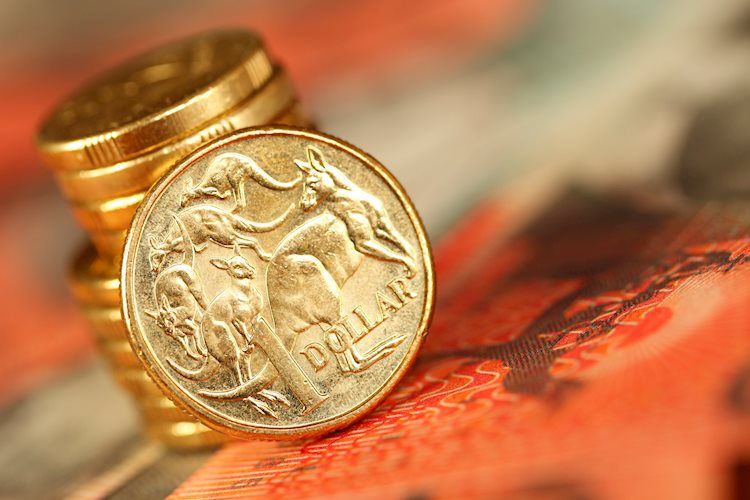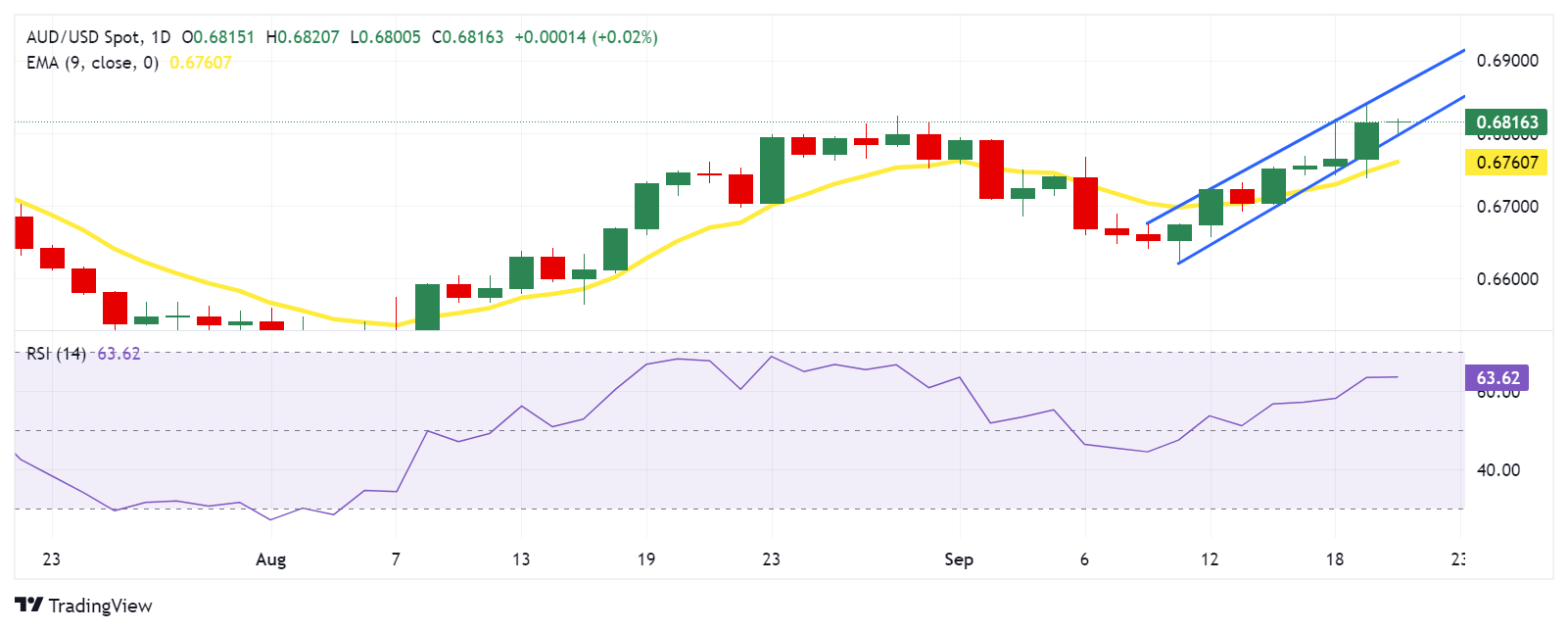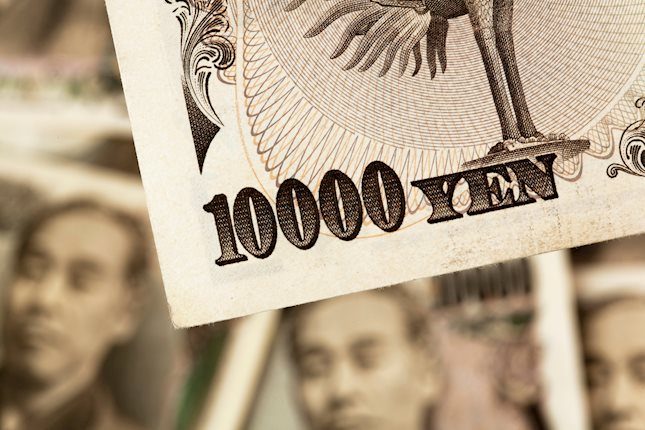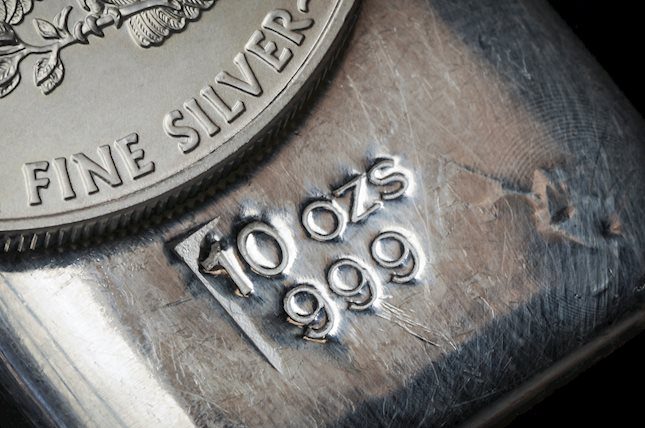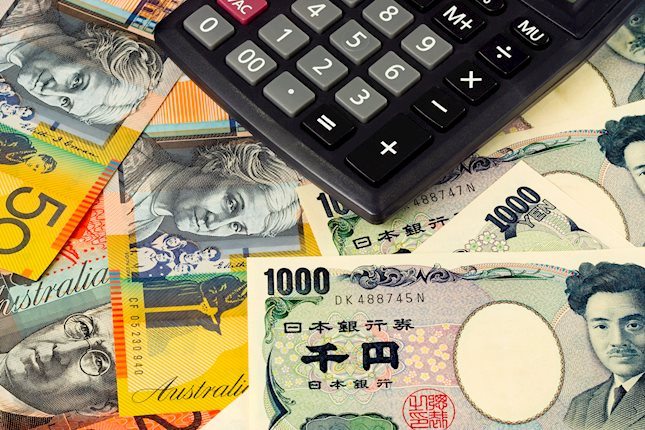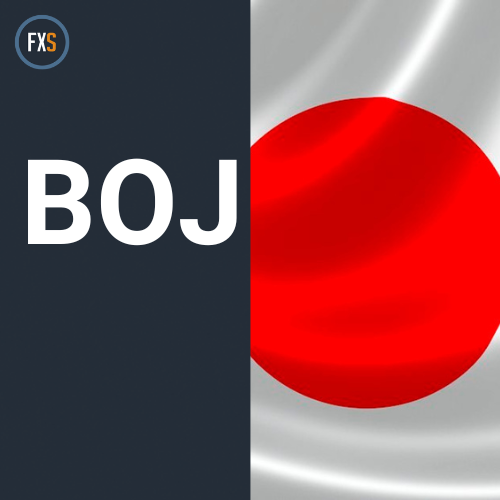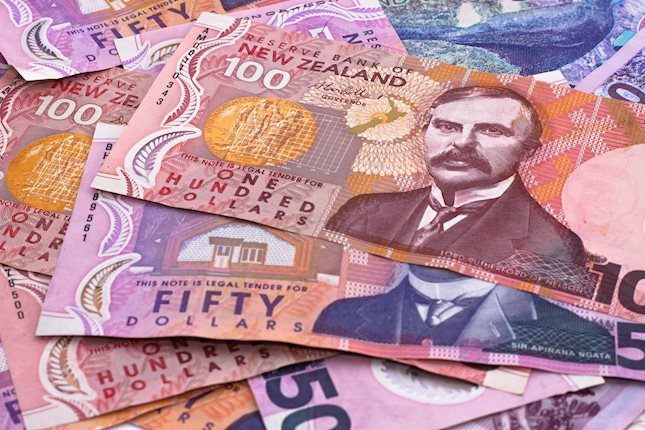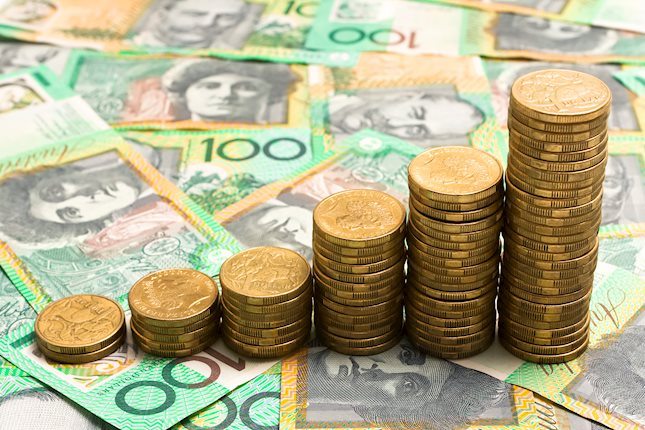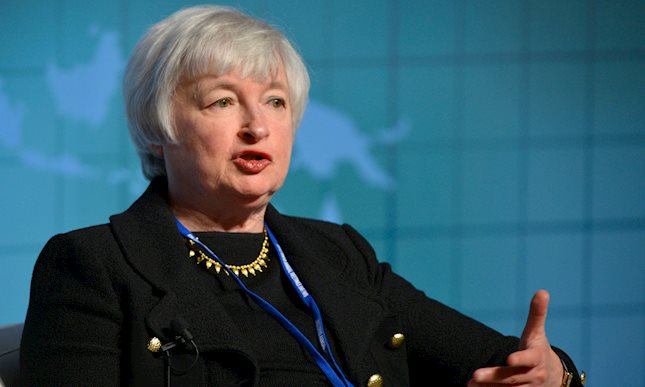Australian Dollar extends upside as traders expect Fed to deliver more rate cuts
- The Australian Dollar received support against the US Dollar on the policy divergence between the RBA and the Fed.
- The PBoC decided to keep its one-year and five-year Loan Prime Rates unchanged at 3.35% and 3.85%, respectively.
- The US Dollar struggles amid the rising likelihood of further rate cuts by the Federal Reserve in 2024.
The Australian Dollar (AUD) recovers its daily losses and extends its winning streak against the US Dollar (USD) following the interest rate decision by the People’s Bank of China (PBoC) on Friday. The PBoC opted to keep its one-year and five-year Loan Prime Rates (LPRs) unchanged at 3.35% and 3.85%, respectively. As close trade partners, any developments in the Chinese economy can significantly impact Australian markets.
The AUD/USD pair received support following Thursday’s labor market report and the Federal Reserve’s (Fed) 50 basis points (bps) interest rate cut on Wednesday. The divergence in monetary policy between the Reserve Bank of Australia’s (RBA) commitment to maintaining higher rates for longer and the Fed’s easing cycle is expected to impact the pair’s movement in the near term.
The US Dollar faces challenges amid growing expectations for further rate cuts by the US Federal Reserve by the end of 2024. The latest dot plot projections suggest a gradual easing cycle, with the median rate for 2024 revised down to 4.375% from the 5.125% forecast in June.
Fed Chair Jerome Powell commented on the aggressive rate cut, saying, “This decision reflects our growing confidence that, with the appropriate adjustments to our policy, we can maintain a strong labor market, support moderate economic growth, and bring inflation down to a sustainable 2% level.”
Daily Digest Market Movers: Australian Dollar appreciates due to hawkish RBA policy outlook
- Commonwealth Bank (CBA) has adjusted its expectation for the first Reserve Bank of Australia rate cut of 25 basis points, moving it from November 2024 to December 2024. This shift follows a robust employment rate and a continued "hawkish" outlook from the central bank, according to Yahoo Finance.
- US Treasury Secretary Janet Yellen stated on Friday that the recent interest rate cut by the Federal Reserve is a very positive indicator for the US economy. According to Yellen, it demonstrates the Fed's confidence that inflation has significantly decreased and is moving toward the 2% target. Meanwhile, the job market continues to show strength.
- Australian Employment Change came in at 47.5K in August, down from 58.2K in July, but well above the consensus forecast of 25.0K. The Unemployment Rate remained steady at 4.2% in August, in line with both expectations and the previous month's figure, according to data released by the Australian Bureau of Statistics (ABS).
- The Federal Open Market Committee (FOMC) lowered the federal funds rate to a range of 4.75% to 5.0%, marking the Fed’s first rate cut in over four years. This move signals the Fed’s commitment to safeguarding the labor market and steering the economy away from any signs of recession.
- Fed policymakers updated their quarterly economic forecasts, increasing the median projection for unemployment to 4.4% by the end of 2024, up from the 4% estimate made in June. They also raised their long-term forecast for the federal funds rate from 2.8% to 2.9%.
- Economists at Goldman Sachs and Citi have lowered their 2024 GDP growth forecasts for China to 4.7%, below Beijing's target of approximately 5.0%. SocGen describes the scenario as a "downward spiral," while Barclays refers to it as "from bad to worse" and a "vicious cycle." Morgan Stanley has also warned that "things could get worse before they get better," according to a Reuters report.
- China's economy showed signs of weakness in August, characterized by a continued slowdown in industrial activity and falling real estate prices. This situation has prompted increasing pressure on Beijing to enhance spending to stimulate demand, as reported by the National Bureau of Statistics on Saturday, according to Business Standard.
- Reserve Bank of Australia (RBA) Governor Michele Bullock emphasized that it is premature to consider rate cuts given the persistently high inflation. Additionally, RBA Assistant Governor Sarah Hunter noted that while the labor market remains tight, wage growth seems to have peaked and is expected to slow further.
Technical Analysis: Australian Dollar holds a position within the rising wedge near 0.6800
The AUD/USD pair trades near 0.6810 on Friday. Technical analysis of the daily chart shows that the pair is moving upward within the rising wedge pattern, signaling a strengthening of a bullish bias. Additionally, the 14-day Relative Strength Index (RSI) moves toward the 70 mark, indicating an ongoing bullish trend for the pair.
Regarding the upside, the AUD/USD pair may explore the region around the upper boundary of the rising wedge at the 0.6870 level. A breakthrough above the rising wedge could support the pair to test the psychological level of 0.6900.
On the downside, the AUD/USD pair is testing the lower boundary of the rising wedge around the level of 0.6800. A break below this level could pressure the pair to test the nine-day Exponential Moving Average (EMA) at 0.6760, with the next support at the psychological level of 0.6700.
AUD/USD: Daily Chart
Australian Dollar PRICE Today
The table below shows the percentage change of Australian Dollar (AUD) against listed major currencies today. Australian Dollar was the strongest against the Canadian Dollar.
| USD | EUR | GBP | JPY | CAD | AUD | NZD | CHF | |
|---|---|---|---|---|---|---|---|---|
| USD | -0.11% | -0.25% | -0.10% | 0.00% | -0.09% | -0.22% | -0.25% | |
| EUR | 0.11% | -0.15% | 0.02% | 0.09% | 0.00% | -0.10% | -0.13% | |
| GBP | 0.25% | 0.15% | 0.17% | 0.27% | 0.18% | 0.06% | 0.04% | |
| JPY | 0.10% | -0.02% | -0.17% | 0.13% | 0.01% | -0.11% | -0.11% | |
| CAD | -0.00% | -0.09% | -0.27% | -0.13% | -0.11% | -0.21% | -0.23% | |
| AUD | 0.09% | -0.00% | -0.18% | -0.01% | 0.11% | -0.10% | -0.12% | |
| NZD | 0.22% | 0.10% | -0.06% | 0.11% | 0.21% | 0.10% | -0.01% | |
| CHF | 0.25% | 0.13% | -0.04% | 0.11% | 0.23% | 0.12% | 0.01% |
The heat map shows percentage changes of major currencies against each other. The base currency is picked from the left column, while the quote currency is picked from the top row. For example, if you pick the Australian Dollar from the left column and move along the horizontal line to the US Dollar, the percentage change displayed in the box will represent AUD (base)/USD (quote).
RBA FAQs
The Reserve Bank of Australia (RBA) sets interest rates and manages monetary policy for Australia. Decisions are made by a board of governors at 11 meetings a year and ad hoc emergency meetings as required. The RBA’s primary mandate is to maintain price stability, which means an inflation rate of 2-3%, but also “..to contribute to the stability of the currency, full employment, and the economic prosperity and welfare of the Australian people.” Its main tool for achieving this is by raising or lowering interest rates. Relatively high interest rates will strengthen the Australian Dollar (AUD) and vice versa. Other RBA tools include quantitative easing and tightening.
While inflation had always traditionally been thought of as a negative factor for currencies since it lowers the value of money in general, the opposite has actually been the case in modern times with the relaxation of cross-border capital controls. Moderately higher inflation now tends to lead central banks to put up their interest rates, which in turn has the effect of attracting more capital inflows from global investors seeking a lucrative place to keep their money. This increases demand for the local currency, which in the case of Australia is the Aussie Dollar.
Macroeconomic data gauges the health of an economy and can have an impact on the value of its currency. Investors prefer to invest their capital in economies that are safe and growing rather than precarious and shrinking. Greater capital inflows increase the aggregate demand and value of the domestic currency. Classic indicators, such as GDP, Manufacturing and Services PMIs, employment, and consumer sentiment surveys can influence AUD. A strong economy may encourage the Reserve Bank of Australia to put up interest rates, also supporting AUD.
Quantitative Easing (QE) is a tool used in extreme situations when lowering interest rates is not enough to restore the flow of credit in the economy. QE is the process by which the Reserve Bank of Australia (RBA) prints Australian Dollars (AUD) for the purpose of buying assets – usually government or corporate bonds – from financial institutions, thereby providing them with much-needed liquidity. QE usually results in a weaker AUD.
Quantitative tightening (QT) is the reverse of QE. It is undertaken after QE when an economic recovery is underway and inflation starts rising. Whilst in QE the Reserve Bank of Australia (RBA) purchases government and corporate bonds from financial institutions to provide them with liquidity, in QT the RBA stops buying more assets, and stops reinvesting the principal maturing on the bonds it already holds. It would be positive (or bullish) for the Australian Dollar.
Forex News
Keep up with the financial markets, know what's happening and what is affecting the markets with our latest market updates. Analyze market movers, trends and build your trading strategies accordingly.
